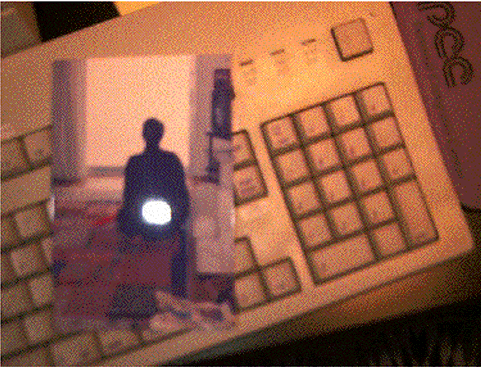


|
Readers be warned: "Everyone's dying apparently. This whole damn story is
full of death"--but in this case, death may become us. Award-winning
author Michael Joyce--whose seminal work in hypertext theory,
criticism and
writing includes "the granddaddy of hypertext fictions" afternoon, a
story--takes readers on an elegiac journey through the twilight zones of
life and death that is ultimately life-affirming. "Twilight" has been composed in the hypertext environment Storyspace, whose interface consists of several windows; text windows show readers the text or visuals of the current "writing space," while the map window shows the current space and its neighbors in a graphic representation. A navigation tool allows readers to choose individual links or spaces or to follow links by default; readers may also explore the "geography" of the web of writing spaces by clicking on a compass--a tool Joyce expertly uses in "Twilight."  The stories of "Twilight" move in two central arcs: east toward life (which exists in the past) and west toward death (which will occur in the future). Above (or north) there is a state of "dream or mind," and below (or south) lies the beginning of a story in something approximating the present moment. The form or topography of the story exquisitely mirrors its content: it is a journey as well as an exploration of the geometry of narrative space and time. Presented in the form of a more traditional narrative, the introduction to "Twilight" outlines the basics of the unfolding stories. In the eastward story, reporter Hugh Colin Enright childnaps his son from his estranged wife after the death of his mother. Hugh then flees to his brother's remote cottage on Pleasant Lake in New York where he meets a poet and former Solidarity activist, now working as a porn-shop clerk. The recent émigré from Poland lives with his wife Magdalena, and their son. The westward story takes place nearly a decade later. Hugh has been contacted by Magdalena, whom he supposedly hasn't seen in the intervening years and who's suffering from a rare kind of cancer. Magdalena asks him for help, and he accompanies her on a journey around Lake Superior and across Ontario toward Minnesota, where she hopes to get help from an increasingly notorious doctor who assists dying patients in ending their lives. As fate has it, the "Twilight Doctor" (would Kervorkian feel honored?) is himself heading east for a conference in Montreal aboard a freighter and passes Hugh and Magdalena as they sit by the shore. The beginning--or one possible beginning--of the story in the present moment finds Hugh and Magdalena on a porch in spring, listening to one of Glenn Gould's recordings of the "Goldberg Variations," which turn out to link their story.  The introduction provides the most linear version of the story unfolding in the web of narrative spaces, a version that serves as an interpretive basis for the reading process. "Twilight" itself is a scrapbook of fragments, memories, impressions and reflections, weaving textual excerpts (from Jenny Holzer to Umberto Eco), visuals and sounds. Many of the visuals Joyce uses are images within images, often mirror reflections, opening up further dimensions. Twilight becomes the hypertext's underlying metaphor, oscillating between the melodramatic and the romantic. "There isn't any one story," and the attempt to locate the one event and point in time that led to the present seems futile, since there's always another before it. Of course, hypertext writers haven't been the first to experiment with narrative time, space and logic; they had numerous "print predecessors," Hypertext, however, lends itself to the visualization of these experiments, adding a cinematic quality to texts by opening up windows and spaces, slowing down or speeding up narrative time through jump cuts, by allowing readers to revisit spaces or to get caught in narrative loops. Joyce knows his medium well enough to anticipate the pressing question readers might have at some point: "What happened to the story: It went on without us." But that's not the end of it, since we always get a chance to find the story again, discover new versions of it. Sometimes the reading process may be interrupted by windows announcing "End of file," or "out of memory" but these reminders are undermined by the story, which is never out of memory and where every new file means a new day; "The End" remains forever suspended. As "Twilight" puts it: "Perhaps the city of text will be consciously unfinished, fragmentary, open... unfinished in the way that death unfinishes us all." |